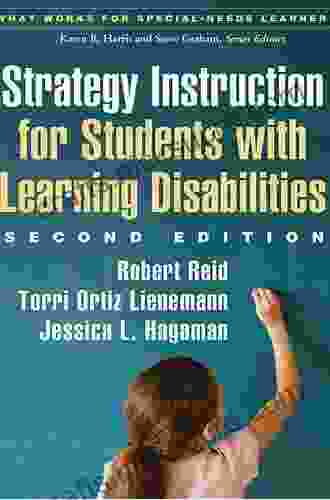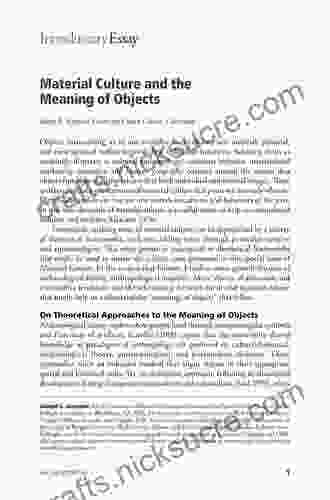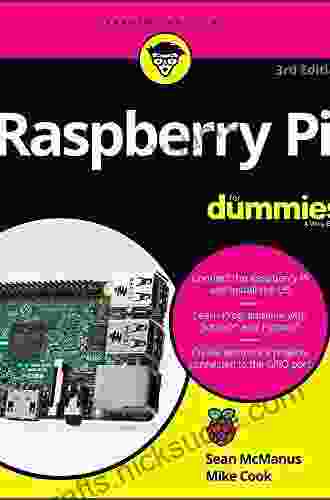Analytical Method Validation and Instrument Performance Verification: A Comprehensive Guide

5 out of 5
| Language | : | English |
| File size | : | 3700 KB |
| Text-to-Speech | : | Enabled |
| Screen Reader | : | Supported |
| Word Wise | : | Enabled |
| Print length | : | 320 pages |
| Lending | : | Enabled |
Analytical methods and instruments play a crucial role in various fields, including the pharmaceutical industry, food industry, environmental analysis, clinical chemistry, and quality control. The accuracy, reliability, and consistency of the data generated by these methods and instruments are of utmost importance for informed decision-making and ensuring the safety and efficacy of products and processes. Analytical method validation and instrument performance verification are two essential quality control procedures that are designed to ensure the integrity of analytical results.
Analytical Method Validation
Analytical method validation is the process of demonstrating that an analytical method is suitable for its intended purpose. It involves evaluating the method's performance characteristics under different conditions and ensuring that the results are accurate, reliable, and reproducible. The validation parameters typically evaluated include:
1. Accuracy
Accuracy refers to the closeness of the measured value to the true value. It is usually expressed as the percentage of error or the bias.
2. Precision
Precision refers to the degree of agreement among repeated measurements of the same sample. It is typically expressed as the standard deviation, variance, or coefficient of variation.
3. Sensitivity
Sensitivity refers to the ability of the method to detect and quantify small amounts of the analyte. It is usually expressed as the limit of detection (LOD) or the limit of quantitation (LOQ).
4. Specificity
Specificity refers to the ability of the method to measure the analyte of interest without interference from other substances present in the sample. It is typically evaluated by testing the method with samples containing potential interferents.
5. Robustness
Robustness refers to the ability of the method to withstand small changes in operating conditions, such as temperature, pH, or reagent concentration. It is evaluated by testing the method under different conditions to ensure that the results are not significantly affected.
Instrument Performance Verification
Instrument performance verification (IPV) is the process of ensuring that the analytical instrument is functioning properly and producing accurate results. IPV involves performing a series of tests to assess the instrument's performance characteristics, such as:
1. Calibration
Calibration involves establishing a relationship between the instrument's response and the concentration of the analyte. It is typically performed using a series of calibration standards with known concentrations.
2. Linearity
Linearity refers to the ability of the instrument to produce a linear response over a specified range of analyte concentrations. It is evaluated by plotting the instrument's response against the concentration of the analyte and assessing the linearity of the plot.
3. Repeatability
Repeatability refers to the ability of the instrument to produce the same results when the same sample is analyzed multiple times. It is typically expressed as the relative standard deviation of the repeated measurements.
4. Intermediate precision
Intermediate precision refers to the ability of the instrument to produce consistent results when the same sample is analyzed on different days or by different analysts. It is typically expressed as the relative standard deviation of the results obtained on different days or by different analysts.
5. Detection limit
The detection limit refers to the lowest concentration of the analyte that can be detected by the instrument. It is typically determined by analyzing a series of samples with known concentrations and identifying the concentration at which the analyte can be reliably detected.
Regulatory Requirements
Analytical method validation and instrument performance verification are required by regulatory agencies in various industries. For example, the United States Food and Drug Administration (FDA) requires analytical methods to be validated before they can be used for the analysis of drug products. Similarly, the International Council for Harmonisation (ICH) provides guidelines for the validation of analytical methods used in the pharmaceutical industry.
Best Practices for Method Validation and IPV
Effective method validation and IPV require careful planning and execution. Here are some best practices to consider:
1. Define the intended use of the method
Clearly define the purpose of the analytical method and the specific applications for which it will be used. This will help in selecting the appropriate validation parameters and acceptance criteria.
2. Choose appropriate validation and IPV procedures
Select validation and IPV procedures that are appropriate for the specific analytical method and the intended use of the results. Use validated and standardized procedures whenever possible.
3. Use qualified and calibrated instrumentation
Ensure that the analytical instruments used for method validation and IPV are qualified and calibrated to meet the specified performance requirements.
4.
5 out of 5
| Language | : | English |
| File size | : | 3700 KB |
| Text-to-Speech | : | Enabled |
| Screen Reader | : | Supported |
| Word Wise | : | Enabled |
| Print length | : | 320 pages |
| Lending | : | Enabled |
Do you want to contribute by writing guest posts on this blog?
Please contact us and send us a resume of previous articles that you have written.
 Fiction
Fiction Non Fiction
Non Fiction Romance
Romance Mystery
Mystery Thriller
Thriller SciFi
SciFi Fantasy
Fantasy Horror
Horror Biography
Biography Selfhelp
Selfhelp Business
Business History
History Classics
Classics Poetry
Poetry Childrens
Childrens Young Adult
Young Adult Educational
Educational Cooking
Cooking Travel
Travel Lifestyle
Lifestyle Spirituality
Spirituality Health
Health Fitness
Fitness Technology
Technology Science
Science Arts
Arts Crafts
Crafts DIY
DIY Gardening
Gardening Petcare
Petcare Emily K Neuburger
Emily K Neuburger Chashiree M
Chashiree M Jim Morekis
Jim Morekis Helen C Rountree
Helen C Rountree Deborah Madison
Deborah Madison Natasha Preston
Natasha Preston M J Parisian
M J Parisian Jay Dawes
Jay Dawes Maya Lang
Maya Lang Steve Roper
Steve Roper Benjamin Roberts
Benjamin Roberts David Winner
David Winner Lynn E Ponton
Lynn E Ponton Douglas W Hubbard
Douglas W Hubbard Ian Mcleod
Ian Mcleod Cassandra Eason
Cassandra Eason Gisle Solhaug
Gisle Solhaug Aaron Oster
Aaron Oster Marvin Valerie Georgia
Marvin Valerie Georgia Larry Carpenter
Larry Carpenter Alvin Alexander
Alvin Alexander Felice Fox
Felice Fox Aaron Graves
Aaron Graves Garrett Mcnamara
Garrett Mcnamara Vivian Gussin Paley
Vivian Gussin Paley Sissy Goff
Sissy Goff Mark Strom
Mark Strom Casey Robson
Casey Robson Al Desetta
Al Desetta Barbara A Lewis
Barbara A Lewis Clara Shaper
Clara Shaper Michael Crawley
Michael Crawley Tom Jackson
Tom Jackson Sorin Dumitrascu
Sorin Dumitrascu Adam J Rosh
Adam J Rosh Carl Jones
Carl Jones Tomos Forrest
Tomos Forrest Abigail Hair
Abigail Hair Jimmy Houston
Jimmy Houston Kaylynn Flanders
Kaylynn Flanders Stefan Ball
Stefan Ball Brigitte Jordan
Brigitte Jordan Alexander Nehamas
Alexander Nehamas Bathroom Readers Institute
Bathroom Readers Institute Christopher Monahan
Christopher Monahan Sophie Mccartney
Sophie Mccartney Marc Dando
Marc Dando Carley Roney
Carley Roney Gladys Chepkirui Ngetich
Gladys Chepkirui Ngetich Tom Migdalski
Tom Migdalski Abigail Owen
Abigail Owen Adam Lazarus
Adam Lazarus John D Gordon
John D Gordon Paul Mclerran
Paul Mclerran Al Yellon
Al Yellon Scott Meyers
Scott Meyers Rick Sekuloski
Rick Sekuloski Alan Robertson
Alan Robertson Scott Butler
Scott Butler Stephanie Puglisi
Stephanie Puglisi Maxine Levaren
Maxine Levaren Ronald Kaine
Ronald Kaine Genius Reads
Genius Reads Aiden Thomas
Aiden Thomas Susan Walton
Susan Walton David Rensin
David Rensin Lisa M Schab
Lisa M Schab Sheri Van Dijk
Sheri Van Dijk Jeremy Roenick
Jeremy Roenick Agustin Fuentes
Agustin Fuentes Tamora Pierce
Tamora Pierce Catherine Ryan Hyde
Catherine Ryan Hyde Laura Gao
Laura Gao Peter David
Peter David Dan Shideler
Dan Shideler Michael Gruenbaum
Michael Gruenbaum Goodman Publishing
Goodman Publishing Deborah Beck Busis
Deborah Beck Busis Susan Zeppieri
Susan Zeppieri An American Citizen
An American Citizen P S Page
P S Page Lavinia Collins
Lavinia Collins Alifya And Umesh Mohite
Alifya And Umesh Mohite Jennifer Shannon
Jennifer Shannon Garo Yepremian
Garo Yepremian David Lipsky
David Lipsky Michael Baigent
Michael Baigent Betsy Miller
Betsy Miller Matt Owens
Matt Owens Barbara Natterson Horowitz
Barbara Natterson Horowitz Aaron Blight
Aaron Blight Charles L Byrne
Charles L Byrne Mikki Daughtry
Mikki Daughtry Phong Thong Dang
Phong Thong Dang Terry Palechuk
Terry Palechuk Sarah Maslin Nir
Sarah Maslin Nir Programming Languages Academy
Programming Languages Academy Emily J Taylor
Emily J Taylor Adam Galinsky
Adam Galinsky Judi Kesselman Turkel
Judi Kesselman Turkel Craig Timberg
Craig Timberg Joe Simpson
Joe Simpson Lucy Letcher
Lucy Letcher G Bailey
G Bailey Kenn Kaufman
Kenn Kaufman Ada Calhoun
Ada Calhoun Domenica Marchetti
Domenica Marchetti Steve Rosenberg
Steve Rosenberg Barbara Fox
Barbara Fox Brad Brewer
Brad Brewer Ann Frederick
Ann Frederick Abby Hafer
Abby Hafer Wayne Westcott
Wayne Westcott Jack Moore
Jack Moore Rory Miller
Rory Miller Rosie Pope
Rosie Pope Laura Peyton Roberts
Laura Peyton Roberts Eduardo Duran
Eduardo Duran John Taylor
John Taylor Randi Hutter Epstein
Randi Hutter Epstein Aaron Lee Johnson
Aaron Lee Johnson Sean Lewis
Sean Lewis Michelle Hodkin
Michelle Hodkin Vivienne Sanders
Vivienne Sanders Kayla Cottingham
Kayla Cottingham Rachael Ray
Rachael Ray Rex Ogle
Rex Ogle Justin Driver
Justin Driver Chella Quint
Chella Quint Arthur Turrell
Arthur Turrell Laura Sebastian
Laura Sebastian Steve Griffith
Steve Griffith Joy Neighbors
Joy Neighbors Eze Ugbor
Eze Ugbor Amber Fox
Amber Fox Abraham Silberschatz
Abraham Silberschatz Horace Kephart
Horace Kephart Erik Scott De Bie
Erik Scott De Bie Sarah Moore
Sarah Moore Sheldon Axler
Sheldon Axler Kel Carpenter
Kel Carpenter Scott Carney
Scott Carney Achusim Michael
Achusim Michael Randall Hyde
Randall Hyde Brian Greene
Brian Greene John Kean
John Kean Jeremy Shinewald
Jeremy Shinewald Tim Larkin
Tim Larkin Jon Butterworth
Jon Butterworth Charles C Patrick
Charles C Patrick Chiara Giuliani
Chiara Giuliani Abbas Kazerooni
Abbas Kazerooni Uri Bram
Uri Bram Jennifer Ackerman
Jennifer Ackerman Christian Beamish
Christian Beamish Conrad Bauer
Conrad Bauer Darrin Bergman
Darrin Bergman Richard Lighthouse
Richard Lighthouse Sheila Lamb
Sheila Lamb Abigail Marshall
Abigail Marshall Walter Browder
Walter Browder Marlene Wagman Geller
Marlene Wagman Geller Dan Morris
Dan Morris Moon Ho Jung
Moon Ho Jung Dr Robert Pasahow
Dr Robert Pasahow Gail Buckland
Gail Buckland T L Christianson
T L Christianson James Surowiecki
James Surowiecki Aaron Mahnke
Aaron Mahnke Scott Shaw
Scott Shaw Devika Primic
Devika Primic Matt Warshaw
Matt Warshaw Teresa Finney
Teresa Finney Abdelkader Nouiri
Abdelkader Nouiri Dan Werb
Dan Werb Annie Nicholas
Annie Nicholas Jeff Bauman
Jeff Bauman Sam J Miller
Sam J Miller Fred Fields
Fred Fields David Simon
David Simon Achref Hassini
Achref Hassini Jim Willis
Jim Willis Tom Rosenbauer
Tom Rosenbauer Charles H Kraft
Charles H Kraft Jacob Neumann
Jacob Neumann Mary Roach
Mary Roach Meg Keys
Meg Keys Brandon Neice
Brandon Neice Paula Deen
Paula Deen Martha Gellhorn
Martha Gellhorn Katie Lear
Katie Lear Asato Asato
Asato Asato Adam Becker
Adam Becker Adam Lashinsky
Adam Lashinsky Anthony Wilkenson
Anthony Wilkenson Richard Martin
Richard Martin Kit Bauman
Kit Bauman Abdul Foster
Abdul Foster Israel Finkelstein
Israel Finkelstein Zoe Hamlet Silva
Zoe Hamlet Silva Adam Benshea
Adam Benshea Monica Sorrenson
Monica Sorrenson Christina Hoff Sommers
Christina Hoff Sommers Elisabetta Viggiani
Elisabetta Viggiani Lisa M Given
Lisa M Given Al Barkow
Al Barkow Shuai Huang
Shuai Huang Gavin D J Harper
Gavin D J Harper Christopher Knight
Christopher Knight Adam Braus
Adam Braus Rolf Mowatt Larssen
Rolf Mowatt Larssen Allan Sand
Allan Sand Virginia Smith Harvey
Virginia Smith Harvey Chaz Scoggins
Chaz Scoggins Papus
Papus Pamela Druckerman
Pamela Druckerman Ron Jones
Ron Jones Shari Eskenas
Shari Eskenas Gayle Forman
Gayle Forman Mary Wong
Mary Wong Abigail Hing Wen
Abigail Hing Wen Ilsa J Bick
Ilsa J Bick Sally Clarkson
Sally Clarkson Charlie Barker
Charlie Barker Adam H Balen
Adam H Balen Bill Loguidice
Bill Loguidice Adam Frank
Adam Frank Kemi Iwalesin
Kemi Iwalesin Michel Roy
Michel Roy Abigail Alling
Abigail Alling Abbey Curran
Abbey Curran Abigail Tucker
Abigail Tucker Stephen Brennan
Stephen Brennan Glen Finland
Glen Finland Rania Abouzeid
Rania Abouzeid Barry Dainton
Barry Dainton Ben Cohen
Ben Cohen Andrew Campanella
Andrew Campanella Bill Mckibben
Bill Mckibben Laurie Chaikind Mcnulty Lcsw C
Laurie Chaikind Mcnulty Lcsw C Gerald A Voorhees
Gerald A Voorhees Charles Thomas Jr
Charles Thomas Jr Lillian Cumic
Lillian Cumic Bobby Reyes
Bobby Reyes Roman Dial
Roman Dial Barry Robinson
Barry Robinson Aliza Green
Aliza Green Gregor Clark
Gregor Clark Debbie Ford
Debbie Ford Axie Oh
Axie Oh Steven Alan Childress
Steven Alan Childress Amby Burfoot
Amby Burfoot Louise Pickford
Louise Pickford Phil Boyle
Phil Boyle Steve Mcmenamin
Steve Mcmenamin Kim Gosselin
Kim Gosselin Ned Johnson
Ned Johnson Abigail Melton
Abigail Melton Miranda Kenneally
Miranda Kenneally Mark Januszewski
Mark Januszewski Abbi Glines
Abbi Glines John Hancock
John Hancock Caroline Kaufman
Caroline Kaufman Marie Cirano
Marie Cirano Peter Harrison
Peter Harrison Adam Boduch
Adam Boduch Gerry Donohue
Gerry Donohue Christophe Jaffrelot
Christophe Jaffrelot Ed Engle
Ed Engle Farah Shabazz Ii
Farah Shabazz Ii Kevin A Morrison
Kevin A Morrison Vince Kotchian
Vince Kotchian Irakli Makharadze
Irakli Makharadze Lisa Robertson
Lisa Robertson David Feddes
David Feddes Chuck Callaway
Chuck Callaway Aaron Reed Msn Crna
Aaron Reed Msn Crna Pearson Education
Pearson Education Jasna Tuta
Jasna Tuta Stephen A Mitchell
Stephen A Mitchell Carl Vernon
Carl Vernon Colin Hunter
Colin Hunter Winifred Conkling
Winifred Conkling Hans C Ohanian
Hans C Ohanian Abby Sunderland
Abby Sunderland Phil Gaimon
Phil Gaimon Dick Edie
Dick Edie Stephen Abbott
Stephen Abbott Stuart Firestein
Stuart Firestein Miriam Forman Brunell
Miriam Forman Brunell Lois G Schwoerer
Lois G Schwoerer Jane Gross
Jane Gross Michelle Obama
Michelle Obama Jennifer Finney Boylan
Jennifer Finney Boylan Sherri Granato
Sherri Granato Scott Parsons
Scott Parsons Louise Thaden
Louise Thaden Achille Rubini
Achille Rubini Hillary Allen
Hillary Allen Shannon Hale
Shannon Hale Abinash Das
Abinash Das Adam Koch
Adam Koch Tali Edut
Tali Edut Lin Wellford
Lin Wellford Lisa Latimer
Lisa Latimer Jennifer L Hunt
Jennifer L Hunt O Thomas Gift
O Thomas Gift Lee Sandlin
Lee Sandlin Bruce Van Brunt
Bruce Van Brunt Zoyla Arana
Zoyla Arana Liza Angela
Liza Angela Renda Dionne Madrigal
Renda Dionne Madrigal Jenny Han
Jenny Han Reinette Biggs
Reinette Biggs Michael Johnson
Michael Johnson Achim K Krull
Achim K Krull Eugene H Merrill
Eugene H Merrill Elena Aguilar
Elena Aguilar Al Baird
Al Baird Andrea M Nelson Royes
Andrea M Nelson Royes Cornel West
Cornel West Aaron J Perry
Aaron J Perry Christopher Black
Christopher Black Helen Scales
Helen Scales Andy Couturier
Andy Couturier Richard Sattora
Richard Sattora Adam Enaz
Adam Enaz Jennifer Greene
Jennifer Greene Kathy Koch Phd
Kathy Koch Phd Cosmas Inyang
Cosmas Inyang Blake D Bauer
Blake D Bauer Corinne Andrews
Corinne Andrews Timothy Phelps
Timothy Phelps David Warriner
David Warriner Lucio Russo
Lucio Russo Gloria Atanmo
Gloria Atanmo Abridged Ed Edition Kindle Edition
Abridged Ed Edition Kindle Edition Sharon Boyd
Sharon Boyd George J Hademenos
George J Hademenos T L Lowery
T L Lowery Carmen Moreno
Carmen Moreno Jack Cavanaugh
Jack Cavanaugh Chris Jericho
Chris Jericho Vikas Kakwani
Vikas Kakwani Jeremy Miles
Jeremy Miles Carolyn Jessop
Carolyn Jessop William Hamilton Gibson
William Hamilton Gibson Lindsey Ellison
Lindsey Ellison Alicia Silverstone
Alicia Silverstone Taylan Hoca
Taylan Hoca Ian Davis
Ian Davis Kirk Bailey
Kirk Bailey Stephen Gray
Stephen Gray Norton Juster
Norton Juster Sasha Abramsky
Sasha Abramsky James Heberd
James Heberd Jeremy Paxman
Jeremy Paxman Dmv Test Bank
Dmv Test Bank Peter Sagal
Peter Sagal Adam Kimelman
Adam Kimelman Ann Mariah Cook
Ann Mariah Cook Jason Korol
Jason Korol Michael L Bloomquist
Michael L Bloomquist Todd Graves
Todd Graves Abby Mcallister
Abby Mcallister Robert Allans
Robert Allans R L Stine
R L Stine Kristin Berry
Kristin Berry Paul Schneider
Paul Schneider Debbie Elicksen
Debbie Elicksen Leigh Bardugo
Leigh Bardugo Michael Egan
Michael Egan Amelia Whitmore
Amelia Whitmore Thubten Yeshe
Thubten Yeshe Sarah Luddington
Sarah Luddington Lynn Alley
Lynn Alley Kate Rope
Kate Rope Richard Langer
Richard Langer Alicia C Simpson
Alicia C Simpson Brian L Gorman
Brian L Gorman Baba Ifa Karade
Baba Ifa Karade Pat Chargot
Pat Chargot Katrina Kahler
Katrina Kahler Sarah K L Wilson
Sarah K L Wilson Megan Lane
Megan Lane Seth Kugel
Seth Kugel Tomi Adeyemi
Tomi Adeyemi Gil Capps
Gil Capps Man Kam Lo
Man Kam Lo Daniel Carter Beard
Daniel Carter Beard Og Mandino
Og Mandino Nick Holt
Nick Holt Sam Jarman
Sam Jarman Ron Hotchkiss
Ron Hotchkiss Aaron James
Aaron James Xiuhtezcatl Martinez
Xiuhtezcatl Martinez Rob Gray
Rob Gray Emily Suzanne Clark
Emily Suzanne Clark Thomas Wilson
Thomas Wilson Suzanne Corkin
Suzanne Corkin Abu Mussab Wajdi Akkari
Abu Mussab Wajdi Akkari Jessie Hartland
Jessie Hartland Tom Mccarthy
Tom Mccarthy Adam Chandler
Adam Chandler Beth Newell
Beth Newell Charles Fernyhough
Charles Fernyhough Emma Crewe
Emma Crewe David G Brown
David G Brown Stephanie Zeiss
Stephanie Zeiss Lisa Heffernan
Lisa Heffernan Adam J Cox
Adam J Cox Andy Dumas
Andy Dumas Linda Sarris
Linda Sarris Ken Springer
Ken Springer Ken Retallic
Ken Retallic Adam Freeman
Adam Freeman Irene Lewis Mccormick
Irene Lewis Mccormick Paul Chiasson
Paul Chiasson Randy Walker
Randy Walker John Caig
John Caig Heather Lynn
Heather Lynn Tony Soper
Tony Soper Ralph Villiger
Ralph Villiger Collins Kids
Collins Kids Linford Stutzman
Linford Stutzman Barbara Decker
Barbara Decker Chris Worfolk
Chris Worfolk Lisa Pineda
Lisa Pineda Adam D Scott
Adam D Scott Drew Harris
Drew Harris Curt Lader
Curt Lader Lenyfer Garrido
Lenyfer Garrido George John Romanes
George John Romanes Sean Mcmanus
Sean Mcmanus Brian Hoggard
Brian Hoggard Rachel Caine
Rachel Caine Christopher S Stewart
Christopher S Stewart J Robert King
J Robert King Amber Domoradzki
Amber Domoradzki Daphne Poltz
Daphne Poltz Laura Ray
Laura Ray Stephen R Lawhead
Stephen R Lawhead Arthur Atchabahian
Arthur Atchabahian Christopher Pike
Christopher Pike Robert Reid
Robert Reid E P Marcellin
E P Marcellin Ryan Smithson
Ryan Smithson Nancy Mohrbacher
Nancy Mohrbacher Erika Fatland
Erika Fatland Claire Ahn
Claire Ahn Jessica Hepburn
Jessica Hepburn Neil Oliver
Neil Oliver Ariana Eagleton
Ariana Eagleton Iain Highfield
Iain Highfield Andrew Skurka
Andrew Skurka Aaron Reed
Aaron Reed Tim Jarvis
Tim Jarvis Gary Sakuma
Gary Sakuma Aaron Hahn
Aaron Hahn Robert Fritz
Robert Fritz Harley Rustad
Harley Rustad Rose Ann Hudson
Rose Ann Hudson Martha C Nussbaum
Martha C Nussbaum Abby Haight
Abby Haight Claire Santry
Claire Santry William Deresiewicz
William Deresiewicz Abhishek V R
Abhishek V R Abigail Pogrebin
Abigail Pogrebin Lynn Rush
Lynn Rush Aaron Mccargo
Aaron Mccargo Stacy Eaton
Stacy Eaton Maureen Duffin Ward
Maureen Duffin Ward Richelle Mead
Richelle Mead Jay Ruud
Jay Ruud Laurence Steinberg
Laurence Steinberg Dawson Church
Dawson Church Winston Chang
Winston Chang Edward J Larson
Edward J Larson Melodie M Davis
Melodie M Davis Fumio Sasaki
Fumio Sasaki Michael N Mitchell
Michael N Mitchell
Light bulbAdvertise smarter! Our strategic ad space ensures maximum exposure. Reserve your spot today!

 Jamison CoxStrategy Instruction for Students with Learning Disabilities: A Comprehensive...
Jamison CoxStrategy Instruction for Students with Learning Disabilities: A Comprehensive...
 Reginald CoxTouching the Void: A Harrowing Tale of Survival and Resilience on the World's...
Reginald CoxTouching the Void: A Harrowing Tale of Survival and Resilience on the World's... Dawson ReedFollow ·11.2k
Dawson ReedFollow ·11.2k Bo CoxFollow ·17.1k
Bo CoxFollow ·17.1k Walter SimmonsFollow ·18.8k
Walter SimmonsFollow ·18.8k Anthony WellsFollow ·17.1k
Anthony WellsFollow ·17.1k Robert ReedFollow ·7.5k
Robert ReedFollow ·7.5k Graham BlairFollow ·7.2k
Graham BlairFollow ·7.2k Octavio PazFollow ·9.4k
Octavio PazFollow ·9.4k Terence NelsonFollow ·2.9k
Terence NelsonFollow ·2.9k

 Doug Price
Doug PriceTracing the Evolution of Modern Psychoanalytic Thought:...
Psychoanalysis, once considered a radical...

 Devin Ross
Devin RossThe Digital Role Playing Game Approaches To Digital Game...
These are just a few of the many...

 F. Scott Fitzgerald
F. Scott FitzgeraldHistory from Things: Essays on Material Culture
History from Things:...

 Percy Bysshe Shelley
Percy Bysshe ShelleyThe Priest Lake Girl and the Cabin of Love: A True Story...
The Murder On...

 Isaiah Powell
Isaiah PowellThe Golf Mystic: Dick Edie's Unconventional Approach to...
In the annals of golf history, the name Dick...
5 out of 5
| Language | : | English |
| File size | : | 3700 KB |
| Text-to-Speech | : | Enabled |
| Screen Reader | : | Supported |
| Word Wise | : | Enabled |
| Print length | : | 320 pages |
| Lending | : | Enabled |










